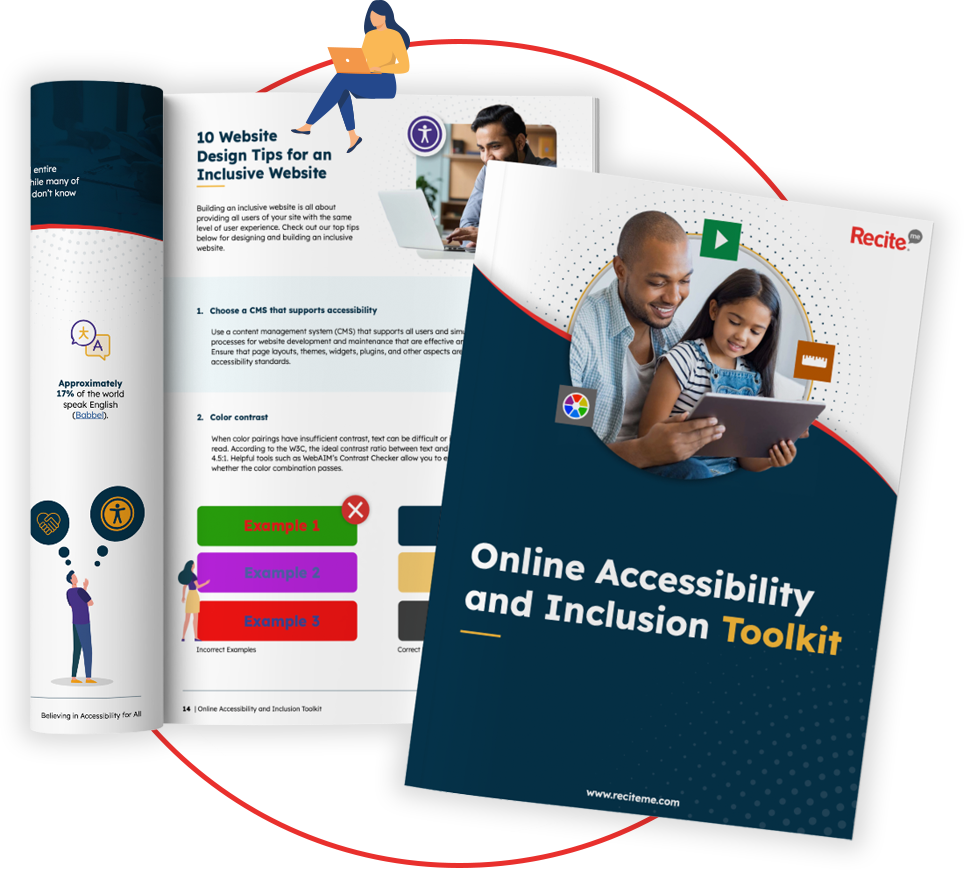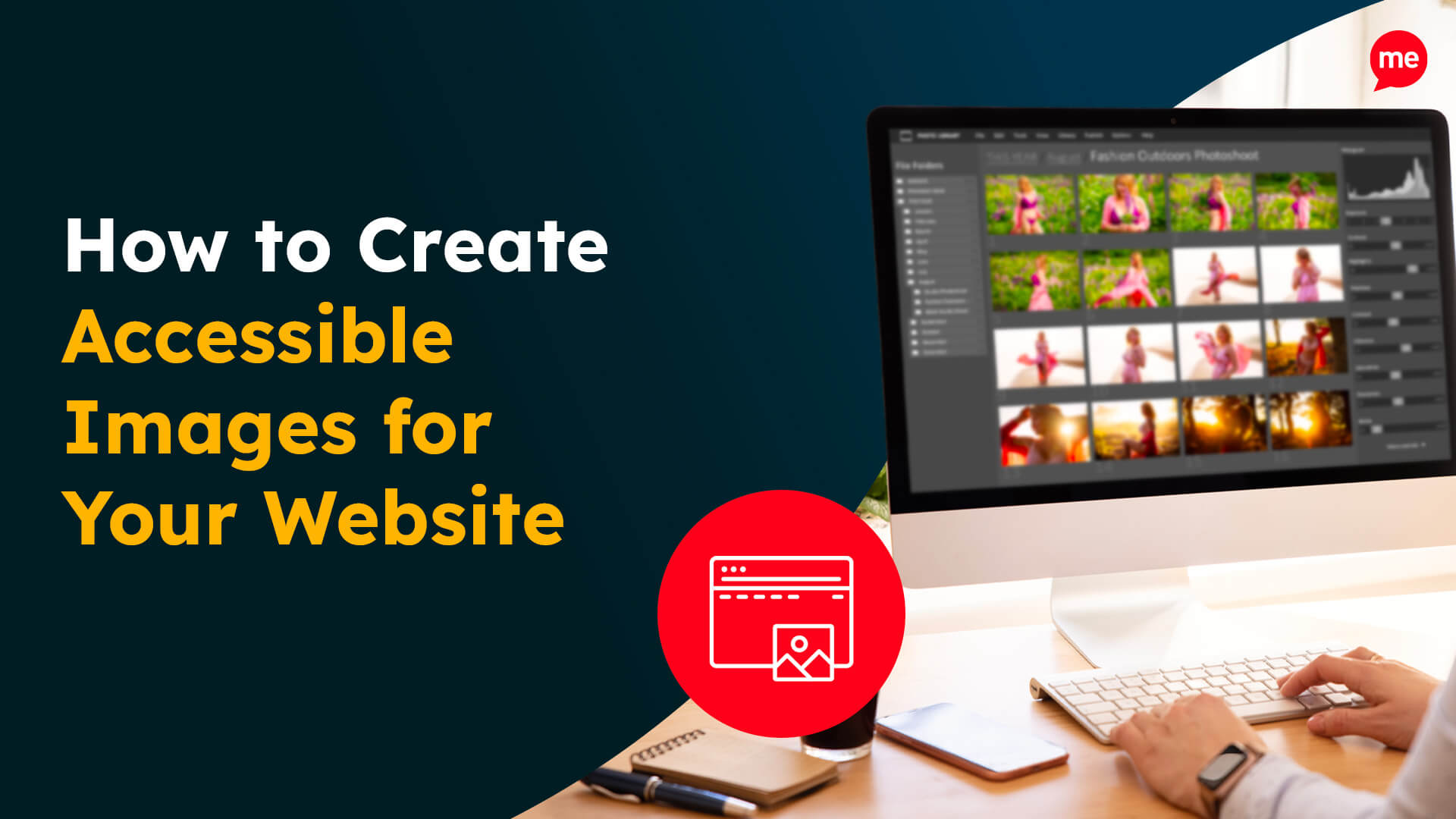Get Your Free Accessibility & Inclusion Toolkit
Download NowInclusion is a word frequently used throughout corporate circles and grassroots movements alike. It dominates discussion online and in the boardroom, features in political campaigns, and influences public policy. But, at times, it can feel like more of a check-box item and trendy buzzword than the driving force for change that it really is.
So, what does inclusion really mean, and why is it important? This article seeks to rediscover the value of inclusion, unpacking the reasons why it should remain a priority for any modern day organisation.
What is inclusion?
Simply put, inclusion is the follow-up to diversity. It is the practice of ensuring everyone, regardless of their background, abilities, or circumstances, has equal opportunities to participate in, and contribute to, society.
Inclusion goes beyond simply having diverse representation; it focusses on creating the conditions in which marginalised groups can have their voices heard. In practical terms, this means providing them the tools and resources they need to succeed in the workplace, their communities, and society as a whole.
For example, employers can set up employee resource groups and support networks for underrepresented persons, such as women and LBTQ+. This gives these groups influence over the way the organisation is run and can lead to a whole host of potential growth opportunities. Employers could also look at implementing flexible work policies to accommodate single parents or those with caregiving needs and health challenges. Website owners, on the other hand, can ensure their web pages are compatible with screen readers so that visually impaired users are able to benefit from their products and services in the same way as well-sighted users.


Free Accessibility Check of your Website
Finding accessibility issues is now easier than ever. Recite Me offers a free automated scan of your website’s homepage to highlight non-compliance. You’ll get recommendations on how to fix them, helping to improve your accessibility score.
Top 5 reasons why inclusion is important
As you can see, inclusion isn’t just about ticking legal boxes like many people think it is; it’s a powerful way for companies to combine business strategy with doing the right thing. There are a number of compelling reasons why inclusion is important, and why it should be at the heart of every forward-thinking organisation’s strategy. So, if you want to build a robust, successful business, take note of this section.
1. Boosts Productivity
Inclusion in the workplace encourages collaboration and innovation. In fact, a Deloitte study found that organisations with inclusive cultures are 3 times more likely to be high-performing and twice as likely to meet or exceed financial goals.
One of the main reasons for this is that employees who feel included are happier and tend to work with higher morale. People are motivated to work for an employer who demonstrates care and understanding, and who accommodates their needs. But more than that, employees who work in inclusive environments are able to complete their duties more effectively because they have been provided the appropriate tools and resources to do so.
Over time, such a boosts in productivity can have a serious positive impact on your businesses’ bottom line.

2. Enhances Creativity and Innovation
A diverse team brings a range of perspectives, leading to fresh ideas and innovative solutions. And an inclusive environment sets the conditions in which these ideas can take shape. To demonstrate this in statistics, research by the Boston Consulting Group found that companies with above-average diversity in leadership experienced 19% higher innovation revenue than those with less diverse leaderships. Inclusive companies, on the other hand, are considered 1.8 times more likely to be ‘change-ready’ than their less inclusive counterparts.
In this way, you can think of inclusion as the practical application of diversity. It ensures innovative ideas are not just heard, but acted upon.
3. Improves Employee Retention
If employees are not given the correct tools to do their job, or are not given a voice, they tend to feel less valued and can become despondent as a result. This can lead to pent-up frustrations, which typically manifest in the form of unexpected departures.
On the contrary, employees who feel valued and included are more likely to stay. Considering that replacing an employee can cost up to 33% of their annual salary, fostering inclusion is a very cost-effective way to build loyalty and reduce turnover.

4. Supports Legal Compliance
Failing to prioritise inclusion can result in lawsuits, fines, and serious reputational damage. Around the world, there are various laws which require organisations to squash discrimination and encourage inclusion. Among these laws are: the Americans with Disabilities Act (ADA) in the US, the European Accessibility Act (EAA) in the EU, and the Disability Discrimination Act (DDA) in Australia.
The Web Content Accessibility Guidelines (WCAG) are another key regulation to note. Managed by the World Wide Web Consortium (W3C), they are a set of internationally-recognised web accessibility standards for ensuring that digital content and products cater to the specific needs of disabled people.
Building inclusive spaces, whether physical or digital, is an essential part of complying with these laws. Therefore, prioritising inclusion can take you a long way toward avoiding penalties and achieving total legal compliance.
5. Increases Market Reach
Inclusion broadens your business’s appeal. By considering diverse needs, such as accessibility features for people with disabilities, language preferences for non-native speakers, and tailored support for individuals with varying cognitive abilities, you can develop products or services that cater to a wider audience.
Inclusion gives you access to an entire segment of the market, a huge pool of potential customers, that you would have otherwise been excluding. What’s more is it helps you stand out against your less inclusive competitors, helping you become a leading industry figure.
What are the barriers to inclusion
Achieving inclusion as a business is not always straightforward. It requires identifying a range of different barriers and then methodically addressing them one-by-one. These inclusion barriers can take many forms, from glaring web accessibility issues to outdated attitudes. One thing is clear, though: overcoming these barriers is absolutely essential if you wish to create a truly inclusive environment.
Digital Barriers
One of the most prevalent barriers to inclusion today lies in the digital world. Many websites, apps, and online tools remain inaccessible to people with disabilities, preventing them from fully participating in the digital economy. For example:
- A website that lacks alt text for images can exclude blind users who rely on screen readers to understand visual content.
- Websites that don’t support keyboard navigation leave users with motor impairments unable to navigate the site effectively.
- Videos without captions or transcripts can prevent deaf or hard-of-hearing individuals from following along.
This is not only a missed opportunity to engage a broader audience, but may also violate accessibility laws, such as the Disability Discrimination Act.
When it comes to addressing digital accessibility barriers, the WCAG is your go-to resource. It provides the necessary requirements for overcoming said barriers and serves as a roadmap for building an inclusive online presence.

Non-Digital Barriers
Non-digital barriers are typically harder to tackle than digital ones. This is because non-digital barriers are more a function of people’s ingrained perceptions and attitudes than anything else, meaning technical approaches are not as effective. So, while not impossible to overcome, non-digital barriers generally require a greater time and effort investment compared with digital barriers.
Unconscious bias in hiring is a great example of a non-digital barrier. It can result in employers favouring candidates based on background, gender, or ethnicity, and unintentionally excluding qualified individuals as a result. To mitigate this, businesses can adopt strategies like blind recruitment and standardised interviewing processes that focus on skill and experience.
Additionally, physical inaccessibility in workplaces, such as buildings without ramps, narrow doorways, or inaccessible restrooms, can prevent employees with disabilities from fully participating. Businesses should evaluate their spaces and make necessary adjustments, ensuring everyone can navigate and use them.
Resistance to change is another major barrier. Some employees or leaders may resist inclusive practices, viewing them as unnecessary or even threatening to the status quo. To overcome this, it is important to build a culture of openness, where leadership supports and promotes inclusivity, and employees are provided with ongoing training to understand the benefits of diversity and inclusion.
Our 40-page Digital Accessibility & Inclusion Toolkit helps businesses break down online barriers and make a real impact. It offers practical advice on all aspects of digital accessibility, from writing an accessibility statement to accessible website tips and inclusive hiring.

How to improve inclusion as an organisation
Building an inclusive organisation is a process that involves multiple steps and requires some serious dedication. And, as with many things in life, consistency is key. From staff training to accessible design, here’s how your businesses can enhance its inclusivity.
Staff Training
Regular workshops on diversity and inclusion help employees address barriers to inclusion, recognise unconscious bias, and learn how to interact with colleagues of different backgrounds. Training sessions can and should cover a range of topics, such as, accessibility regulations, inclusive communication, cultural competency, and inclusive leadership. They should also be held regularly to refresh knowledge and help maintain skills, empowering staff to do their part for inclusion.

Accessible Design
Investing in accessible design for websites and digital platforms is essential for inclusion. Following WCAG best practices ensures digital products are usable by people with various disabilities. For example, ensuring that videos have captions makes content accessible to deaf users, and providing keyboard navigation options ensures users with mobility impairments can interact with digital platforms. Investing in software, like Recite Me’s assistive toolbar, can make this process easier by giving website visitors the freedom to edit online content according to their specific needs.
Leadership Accountability
Leaders must be held accountable for promoting inclusion. Setting clear, measurable inclusion goals and reviewing progress regularly helps ensure that inclusivity is integrated at all levels of the organisation. For instance, leaders might be tasked with aligning digital content with WCAG 2.1 Level AA. They can then use accessibility checker tools to regularly assess where they are in relation to their end goal. When leadership is truly committed to inclusion, it’s infectious, setting the tone for the entire organisation and encouraging others to follow suit.
Inclusive Recruitment Strategies
Inclusive recruitment practices, such as blind hiring and diverse recruitment panels, help reduce bias and ensure that everyone has an equal opportunity to succeed. For instance, using gender-neutral language in job descriptions can attract a broader range of applicants, while blind hiring helps focus the candidate search on skills and qualifications rather than demographics. Ensuring diverse representation also tends to trigger a positive domino effect, whereby diverse hiring panels help perpetuate diverse recruitment and inclusive decision-making.
Open Dialogue
Encourage employees to provide feedback on inclusivity through surveys, focus groups, or suggestion boxes. This helps your organisation identify gaps and issues that might not be immediately visible. For example, employees may highlight challenges they face due to accessibility issues or offer suggestions for improving workplace policies. By listening to and acting on this feedback, businesses can create an environment that values diverse perspectives and fosters trust.




